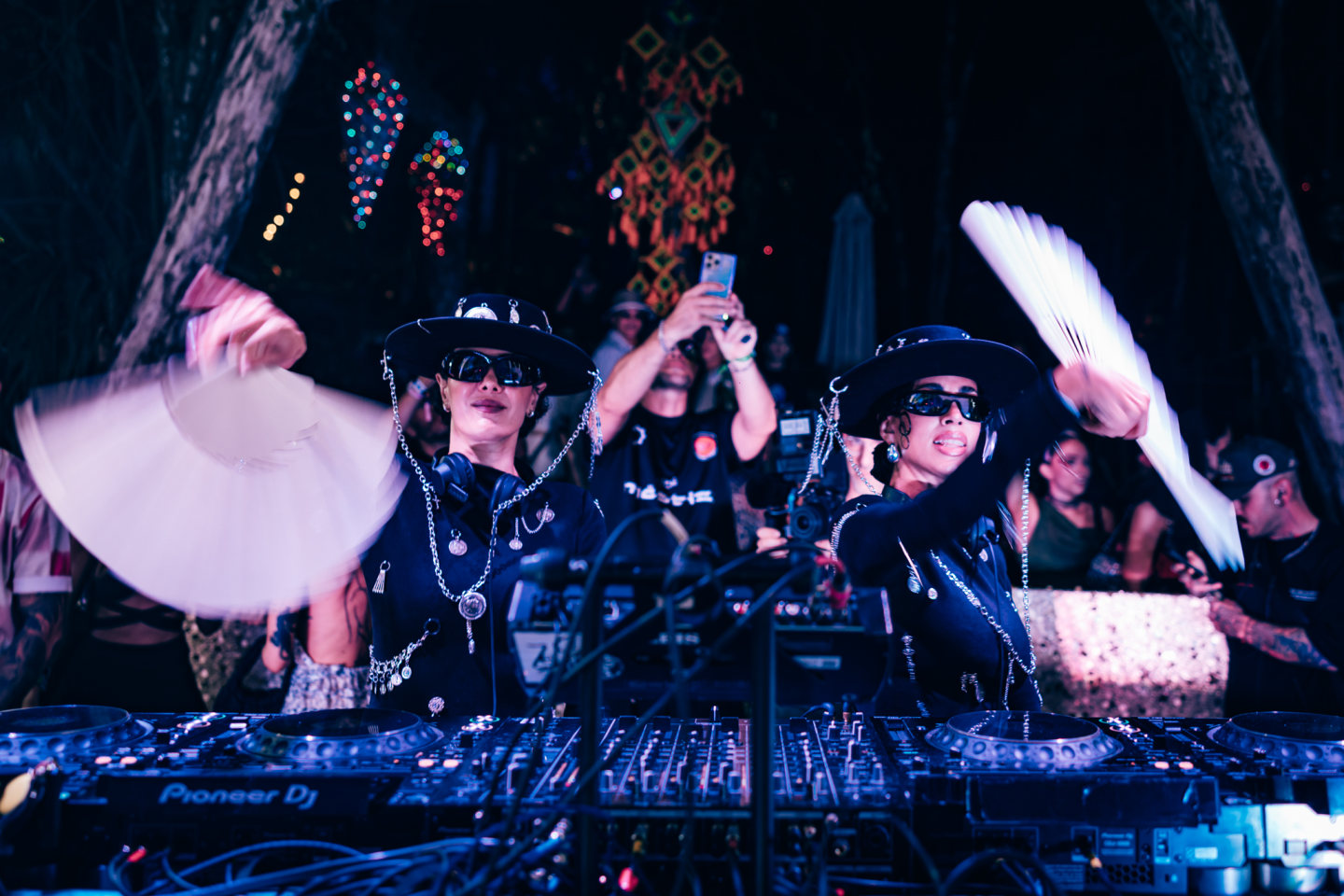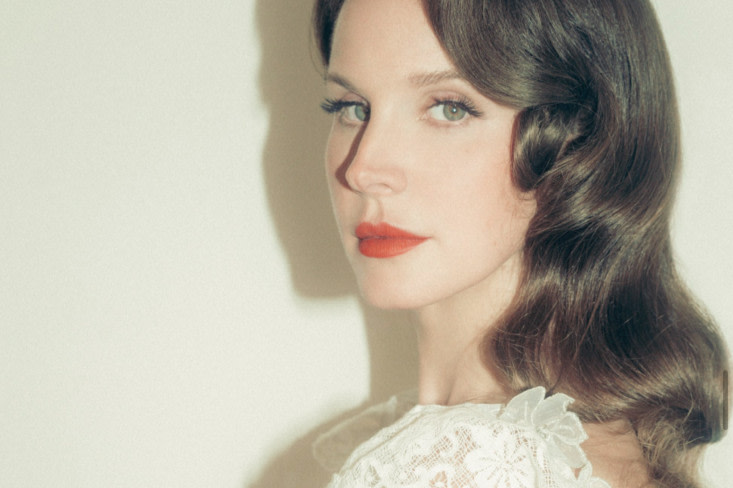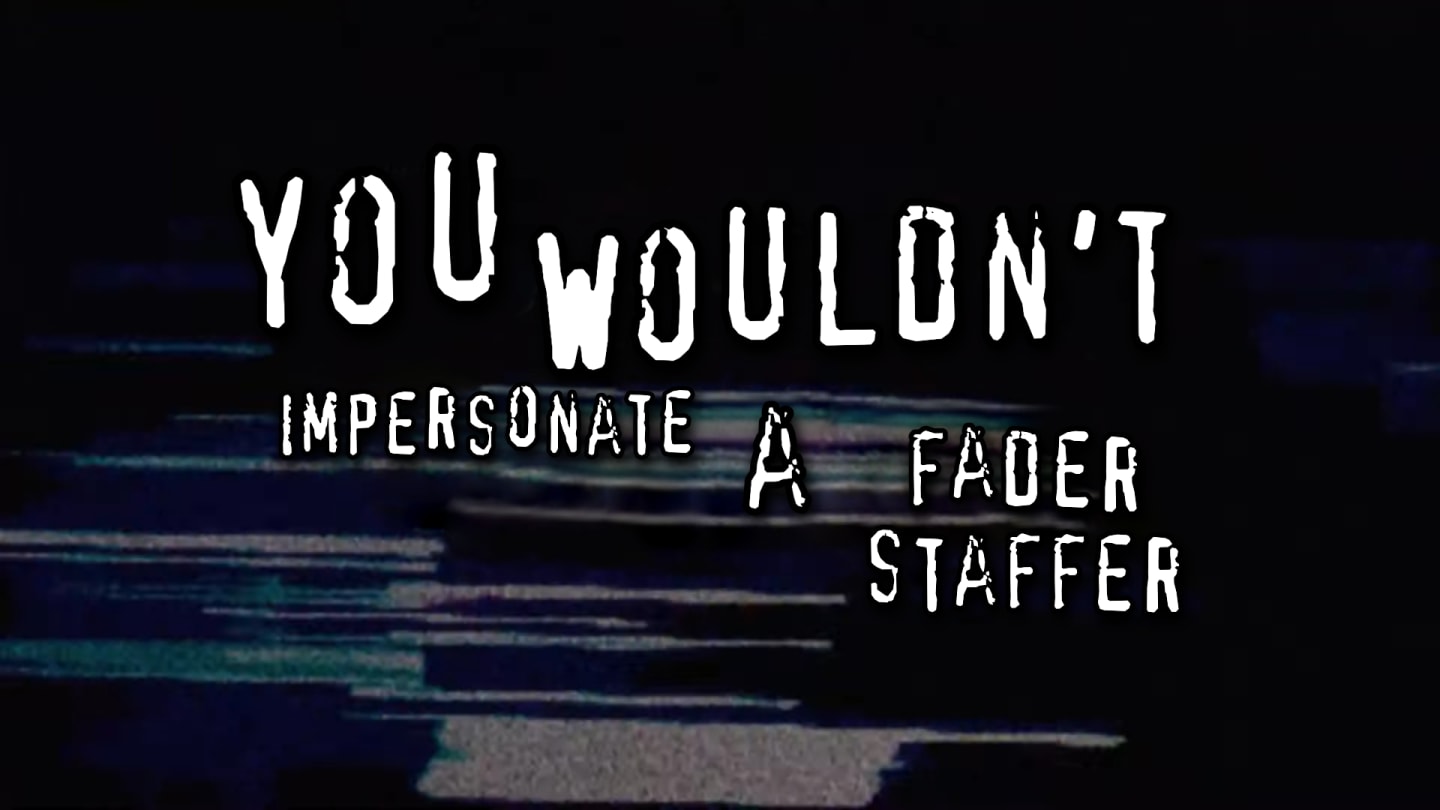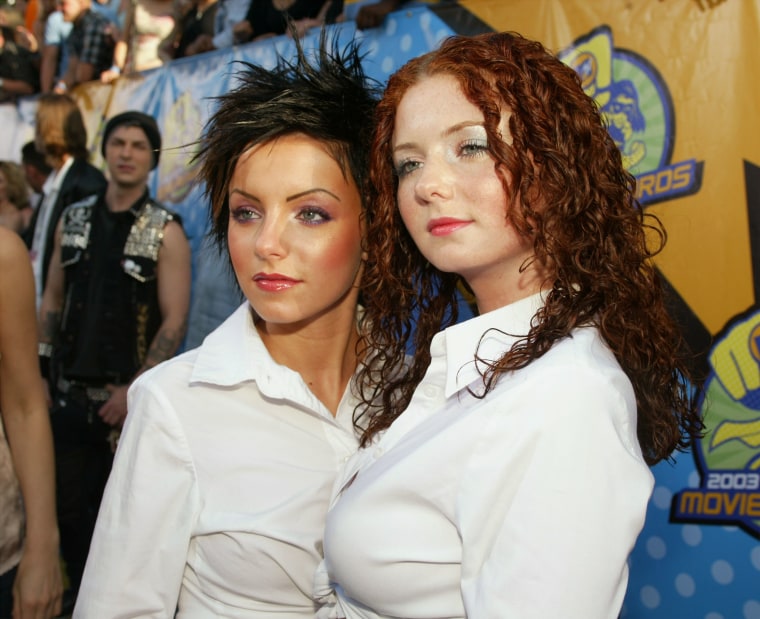Day Zero. Photos by Alive Coverage.
Day Zero
On the weekend of January 11, the once-sleepy beachside town of Tulum, Mexico is teeming with tourists. It’s high season, when close to two million outsiders flock to its perfectly temperate turquoise waters, cenotes (limestone sinkholes where crystalline pools form), wild jungles, Mayan ruins, and over-the-top party scene, which many now compare to that of Ibiza. It’s a recent development that’s gone hand in hand with a boom of massive resort hotels that now line the beachfront, offering decadent meals and an exclusive nightlife circuit for those with heavy pockets. Eye-poppingly expensive taxis clog the roads, and cocktails go for as much as they do in Manhattan’s spendiest spots.
British DJ Damian Lazarus has been visiting Tulum since long before the tourist invasion and formed a deep connection with its culture early on. A longtime festival promoter and label owner, he says he was hesitant to put his own footprint on such a sacred place. But in 2012, when the world became apocalypse-obsessed as the end of the Mayan calendar grew near, he saw it as a sign to throw Day Zero, an 18-hour rave deep in the Yucatan jungle about 30 minutes by car from the city proper.
Lazarus has a thing for rebirth; he dresses like a spiritual leader, his imposing frame draped in matching silky robes and kufis. And — as Carlos the Reindeer, the spiritual leader who blesses the land every year before Day Zero begins, tells me — the end of the Mayan calendar is about rebirth, too. December 21, 2012, he says, was never meant to be the end of the world, just a new beginning. Held every year since its first iteration (minus a two-year COVID break), the festival has grown to host thousands of guests in a large swath of jungle.
It’s difficult for a Tulum party of Day Zero’s scope and size to be ecologically sustainable and culturally respectful, but Lazarus, Carlos, and the festival’s other organizers have maintained a mission to be good to Tulum’s land and traditions throughout its decade-plus run. It’s not for me to say whether they’ve succeeded. A MixMag review of last year’s festival goes deep on the subject and concludes that they are generally living up to their goals. They’re definitely trying, at least: They partner with a company called PetGas that converts plastic waste from the festival into fuel, and they employ indigenous dancers and staff.
I arrive in Tulum four days before the festival begins to attend the release party for Lazarus’ new album, Magickal. The festivities include a coin-bending Swiss mentalist, indigenous Mayan dancers, and a performance from Ghanaian multimedia artist Jojo Abot. As my trip goes on, I realize I am not built to party in Tulum. The shows here have very little to do with the ones I like to go to in New York, and I stick out like a sloppily dressed sore thumb in the designer-clad crowds. I’m happy to be here but start to wonder why I came. My state of mind quickly spirals into a full-blown existential crisis: I am terrified of Day Zero, I realize. Still, when Saturday night rolls around, I embark on a journey to the center of the bass.
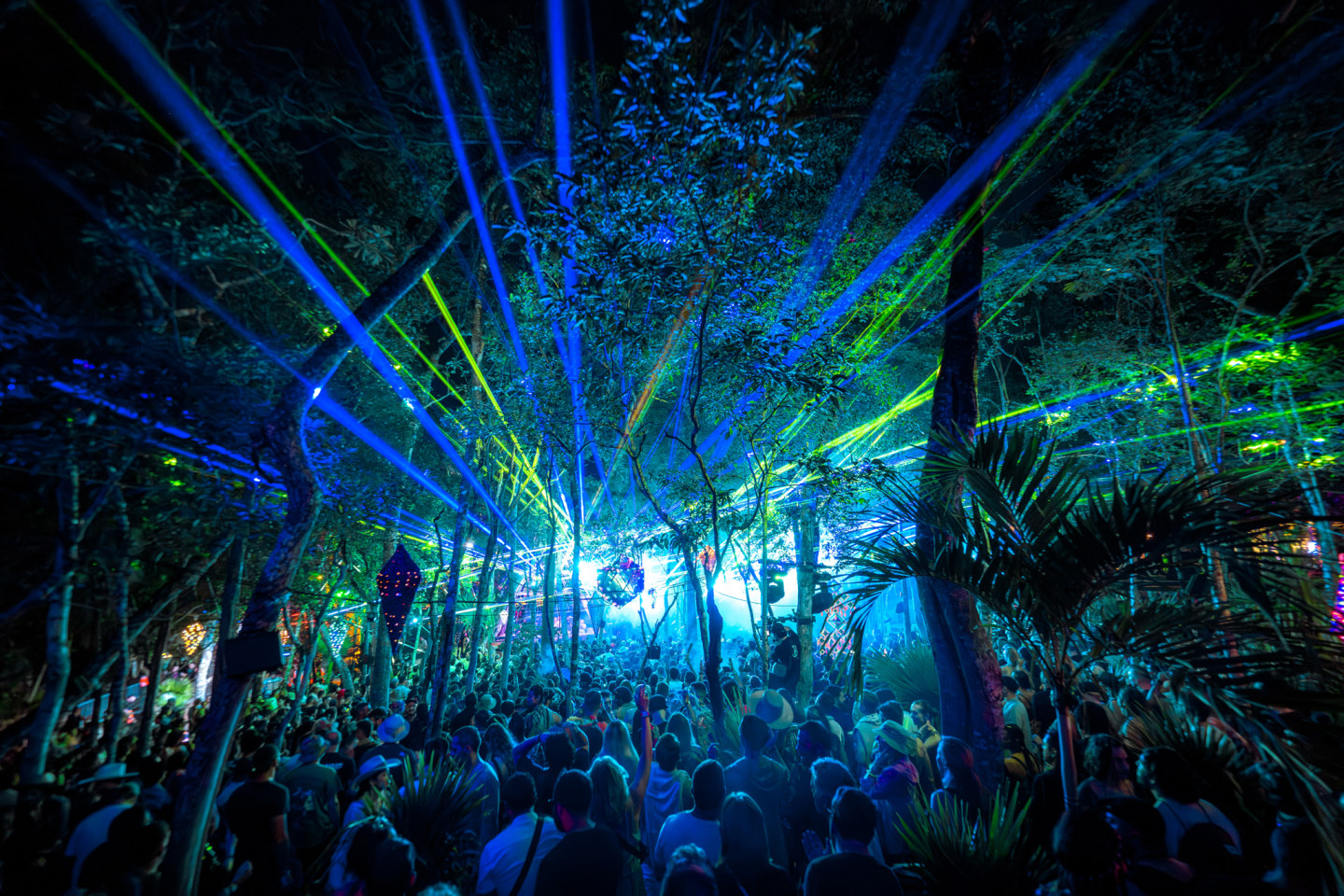
8 p.m.
I travel by van to the jungle accompanied by my friend Ted. Spirits are high, if a bit tentative.
9 p.m.
We arrive, walking past a security checkpoint and under a sign that says “Welcome to the Jungle.” It’s time for a tour.
There’s a tree at the center of the festival grounds draped roots to branches in colorful string lights. It will serve as the meeting point of thousands more ravers tonight. Around it are artisans selling their wares and food venders serving arepas, empanadas, birria tacos, loaded fries, sushi (I did not partake), and more.
Three major paths split off from the tree to each of the three stages. The Main Stage is set up like that of the few other electronic music festivals I’ve attended. There’s a massive DJ booth where the festival’s biggest acts will stand behind the decks, surrounded by multiple tiers of VIP areas. Friends and family get to be in the booth behind the performers. Other high rollers can enjoy table service on a hilly area located side stage. Then there’s El Teatro, where Diego Cavallos (aka Métrika) has an all-Mexican lineup. It’s a hulking white edifice with large cabinets housing large monitors. The Club Stage has the most expansive grounds, allowing even faraway ravers to dance to the booming rhythms and take in the accompanying laser show.
It’s in front of that stage, around 9:30 p.m., that a procession of Mayan dancers enters — a ceremony that kicks off the festival each year. (Doors technically open at 6 p.m., but this is the first major event.) They twirl fire and perform feats of gymnastics on a makeshift hula-hoop trapeze.
10 p.m.
The bass drops on Anthony Middleton, Francesca Lombardo, and Bartolomeo’s set and the vibes shift immediately. The response is rapturous.
We drift toward El Teatro, where a DJ named Rafatel is putting on, to my mind, one of the best sets of the night — chilled-out trance backed by a thick Moog bass. It’s not normally my bag, but I’ll take it.
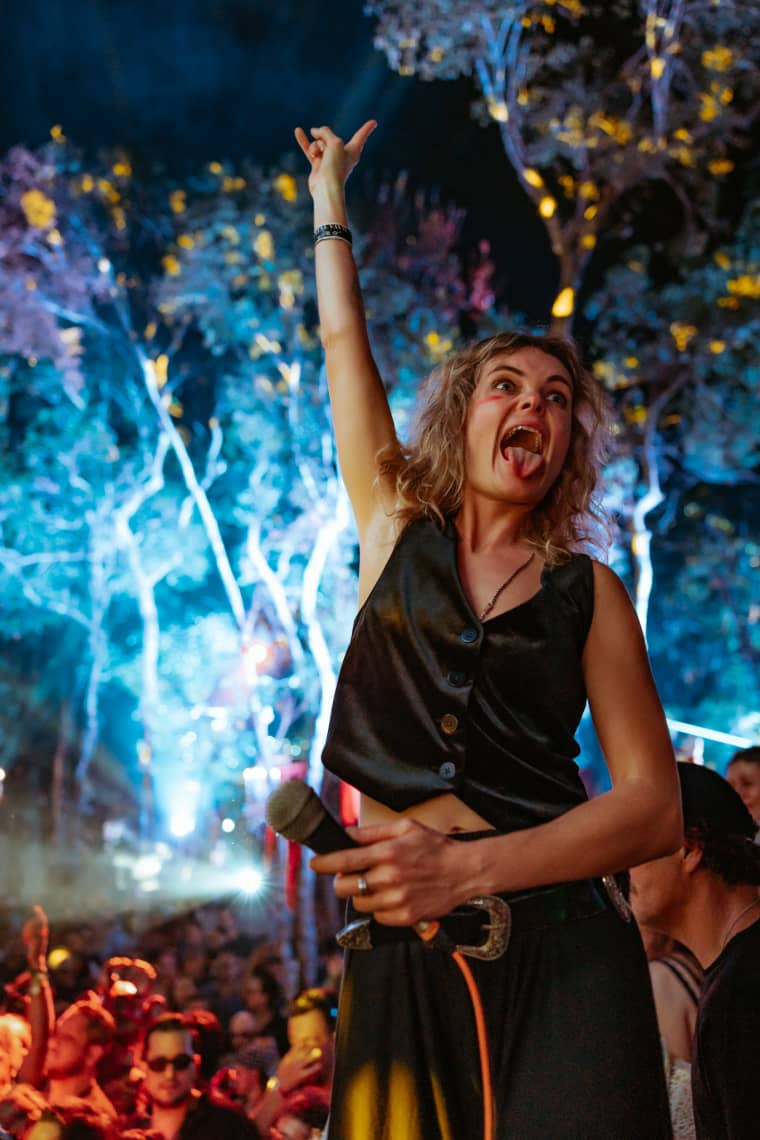
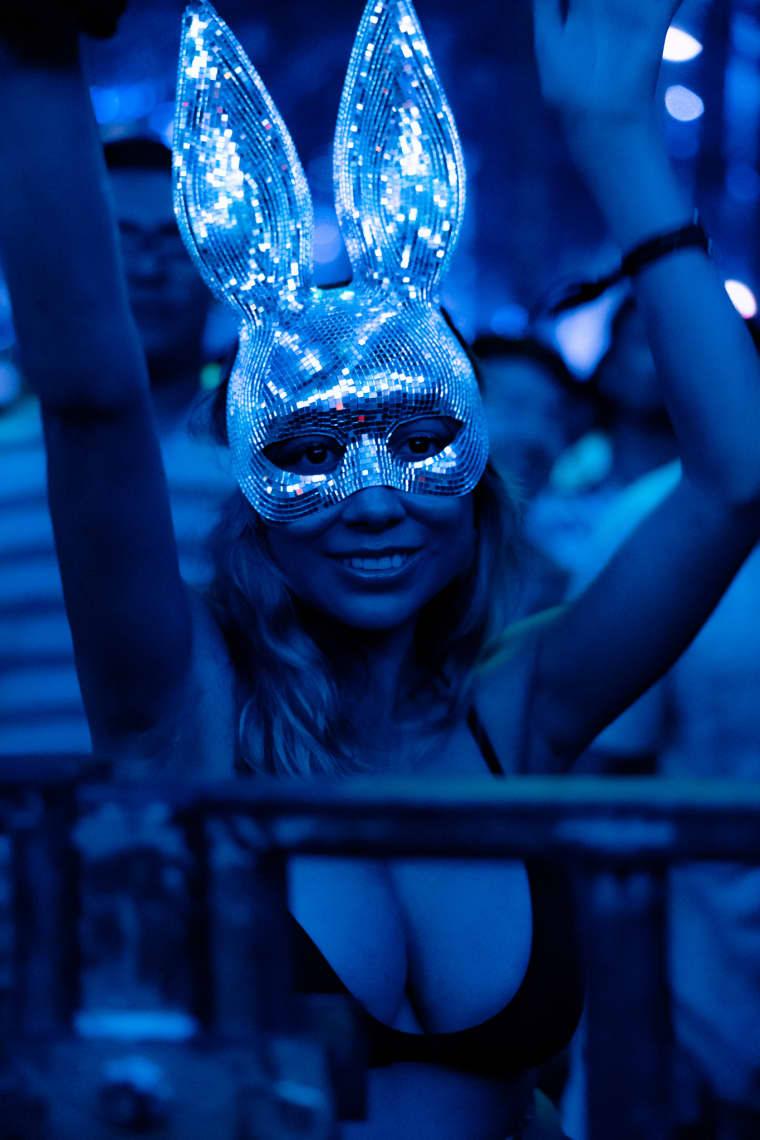
11 p.m.
Day Zero’s VIP area is a network of gated and dimly lit mazes that wrap around the entire festival. Overlooking it all is a fenced-off artist’s lounge with an open bar and a spacious deck where the Day Zero elite lounge on cushions and a circular sofa. Below us is a cavelike, zebra-print room with walls that seem made to be rubbed by people in a particular state of mind.
Up a hill and down a flight of stars surrounded by neon rectangles, there’s a not-so-secret cenote on site with a lifeguard on standby. We return there on occasion to marvel at its beauty — stalactites reflecting off the water’s clear surface as far back as the eye can see. More on this later.
12 a.m.
Do I like Fatboy Slim? The man is a legend, of course, but I’ve seen him twice now, and he’s started both sets by playing a long poem about the virtues of music and togetherness that I find a bit offputting. Still, when the beat drops on the main stage a little after midnight, there’s no denying his abilities. Each of his tracks is perfectly mixed and a joy to dance to. When he transitions into a creative flip of his frequent collaborator David Byrne’s Talking Heads classic “Life During Wartime,” I can’t help but crack a smile.
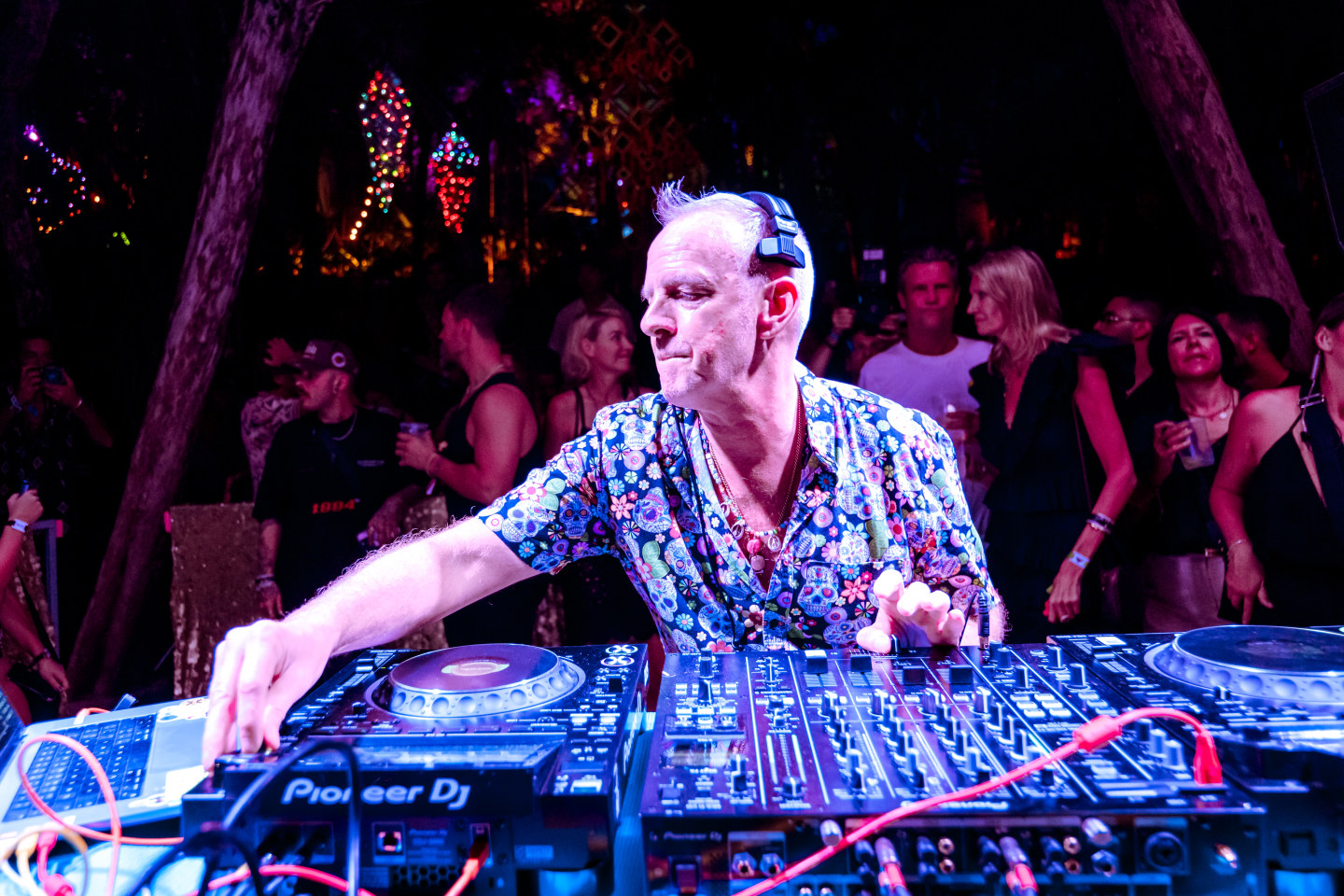
Fatboy Slim at Day Zero 2025.
Day Zero
1 a.m.
The crowd, dressed in increasingly creative clothing and accessories, is beginning to arrive in droves. There are pashmina guys and rave candy girls, but also influencers in high-fashion bodysuits and shredded apparel that does not look very functional in a jungle environment. Many have made heavy use of body paint to create vaguely tribal tattoos on their faces, arms, legs, and torsos. I see more than a few headdresses. White people simply could not get away with these fits stateside.
On platforms scattered across Day Zero’s central meeting grounds, performers are playing somewhat disconcerting acoustic sets — cellos, horns, the works. It’s difficult to hear them over the ruckus, and I suspect they are mainly there as set dressing. Amapiano crossover duo Major League Djz are tearing up the club stage. The party has started in earnest.
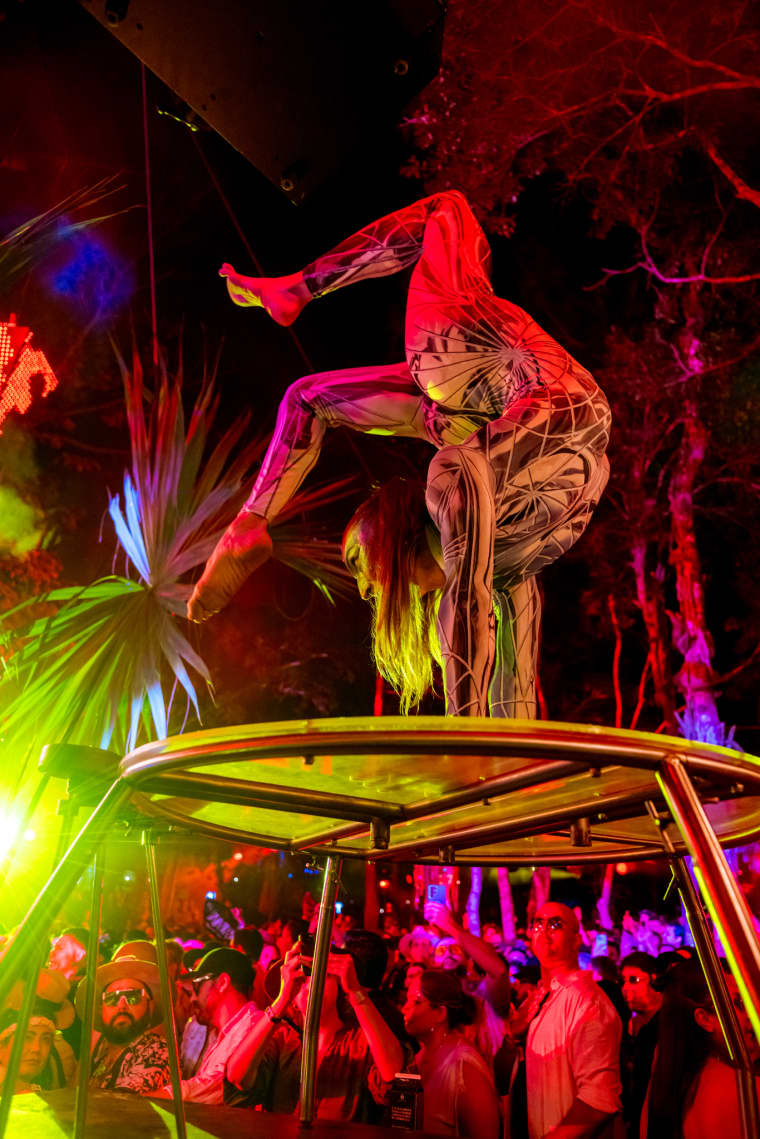
Day Zero
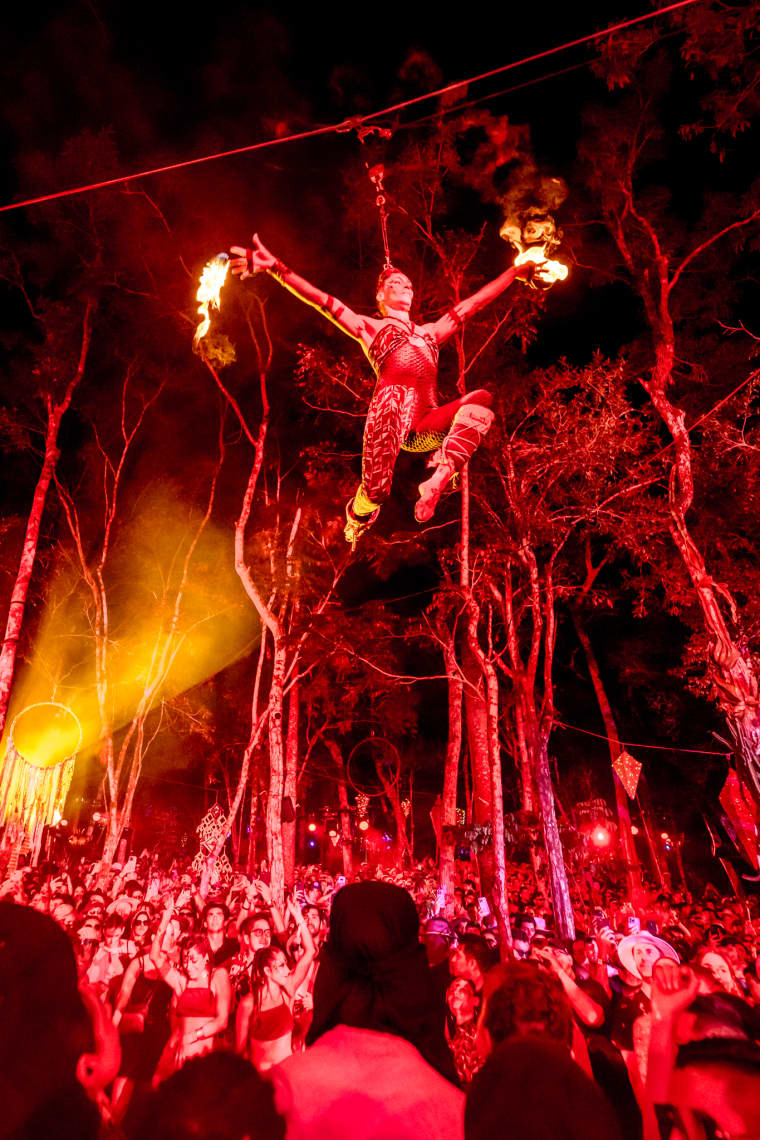
Day Zero
2 a.m.
People are going nuts for Adam Ten and Mita Gami, who are playing back-to-back on the main stage. In my estimation, they are fun, if a bit goofy.
On a trip back to the cenote, we find our first swimmer of the night. It’s a seemingly Central European man in a Speedo and goggles, screaming at the top of his lungs as he dips and dives gracefully in and out of the cold pool. His strokes are as visible below the surface as they are above it — that’s how clear the water is. We decide, jealously, that people probably shouldn’t be allowed to have this much fun.
3 a.m.
Inspired by the energy of the cenote legend and finding our own somewhat lacking, we purchase cold brews from a stand tucked behind El Teatro. They are delicious.
4 a.m.
We catch the delightful final moments of Secret Echoes’ live set at El Teatro. It’s a lot of fun — refreshingly splashy techno with a pinch of Miami bass. During Lee Burridge’s Ibiza-flavored house on the main stage, the cold brew kicks in and we’re enjoying ourselves. The light show at the Club Stage as Airrica b2b Cole Knight bleeds into Patrick Mason is pretty epic.
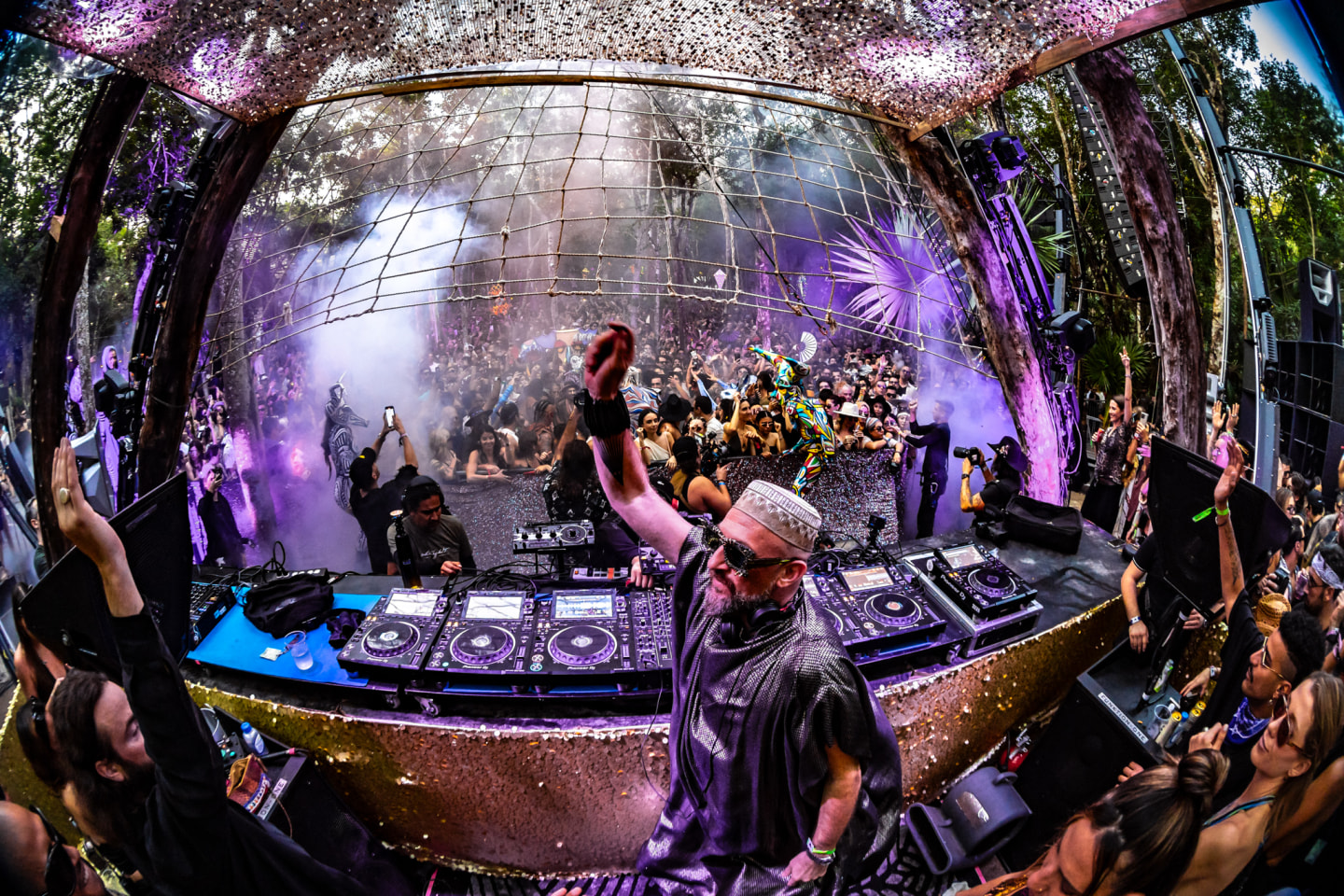
Damian Lazarus playing his famous sunrise set at Day Zero 2025.
Day Zero
5 a.m.
In the artist’s lounge, Damian Lazarus is dishing out hugs like hors d’oeuvres at an art opening. There’s a friendly, communal vibe there, with Mayan dancers lounging beside DJs and other festival insiders. Everyone is dressed to the nines, especially Lazarus, whose fit is gold from top to toe. The cushions are damp with morning dew — and perhaps less savory substances — but no one seems to mind.
6 a.m.
The cold brew is wearing off and morale is flagging. I eat a taco that sits very badly in my stomach. The crowd is getting more boisterous by the moment as we begin to feel less and less so.
Lazarus’s famed sunrise set kicks off at the main stage, where revelers have gathered in large numbers. He seems to be freestyling, pulling beats from the great beyond. Half an hour in, I get the sense that he’s still warming up for something major.
7 a.m.
Lazarus’s set is the most pivotal part of the entire Day Zero, and the festival’s attendees have united for a moment of pure euphoria. Sunrise isn’t until 7:30 a.m., however, and I’ve unfortunately got a flight to catch. We pass the wise old tree at the festival’s center and walk under the “Welcome to the Jungle” sign once more. With Lazarus’s set still pounding behind me, I do feel a momentary sense of rebirth — though I’m not sure of what.

